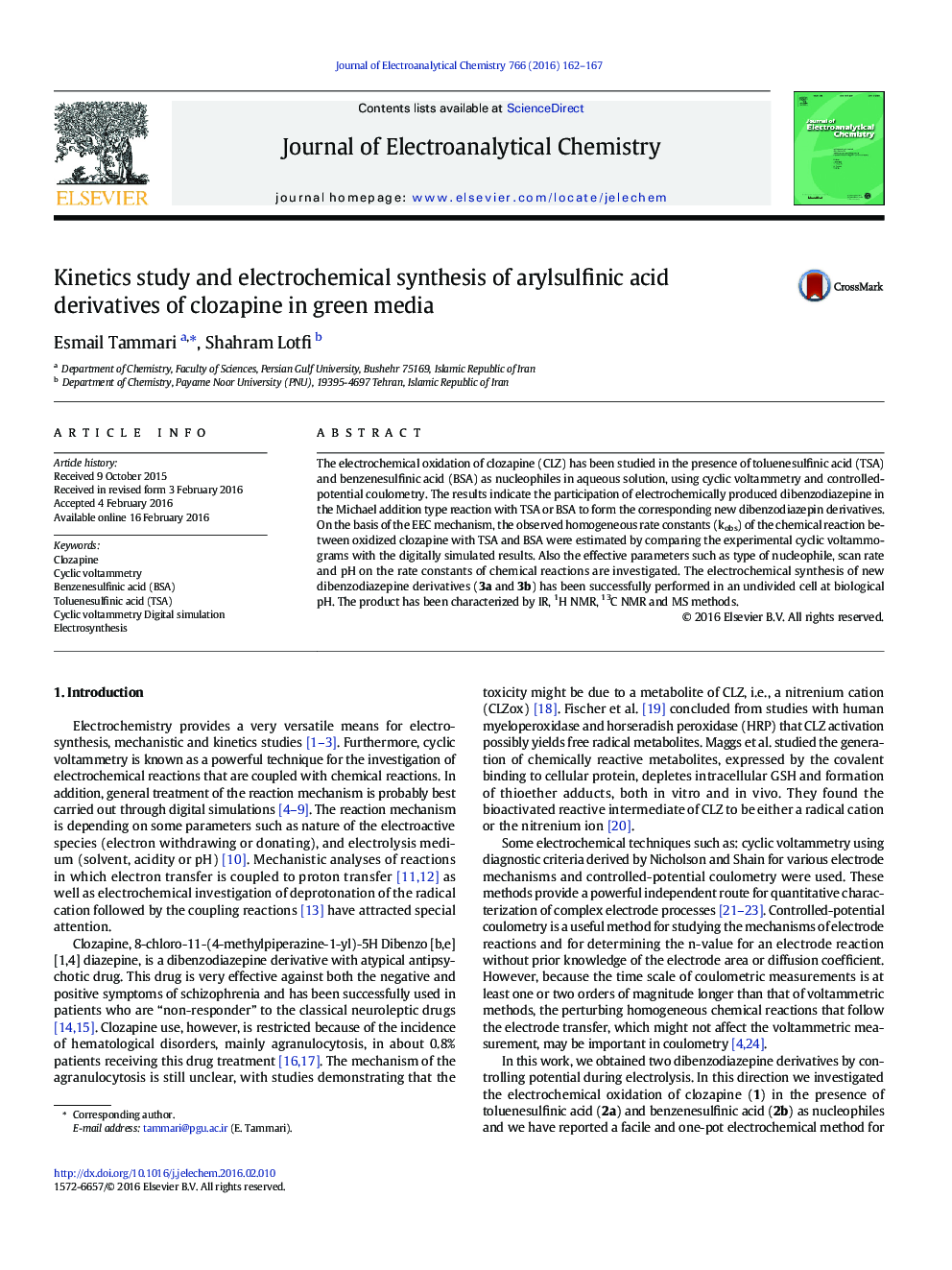| Article ID | Journal | Published Year | Pages | File Type |
|---|---|---|---|---|
| 218023 | Journal of Electroanalytical Chemistry | 2016 | 6 Pages |
•Electro-organic synthesis is truly a one-pot procedure.•Using electricity as reagent instead of chemical reagent.•The electrochemical synthesis performed in an undivided cell at biological pH.
The electrochemical oxidation of clozapine (CLZ) has been studied in the presence of toluenesulfinic acid (TSA) and benzenesulfinic acid (BSA) as nucleophiles in aqueous solution, using cyclic voltammetry and controlled-potential coulometry. The results indicate the participation of electrochemically produced dibenzodiazepine in the Michael addition type reaction with TSA or BSA to form the corresponding new dibenzodiazepin derivatives. On the basis of the EEC mechanism, the observed homogeneous rate constants (kobs) of the chemical reaction between oxidized clozapine with TSA and BSA were estimated by comparing the experimental cyclic voltammograms with the digitally simulated results. Also the effective parameters such as type of nucleophile, scan rate and pH on the rate constants of chemical reactions are investigated. The electrochemical synthesis of new dibenzodiazepine derivatives (3a and 3b) has been successfully performed in an undivided cell at biological pH. The product has been characterized by IR, 1H NMR, 13C NMR and MS methods.
Graphical abstractFigure optionsDownload full-size imageDownload as PowerPoint slide
